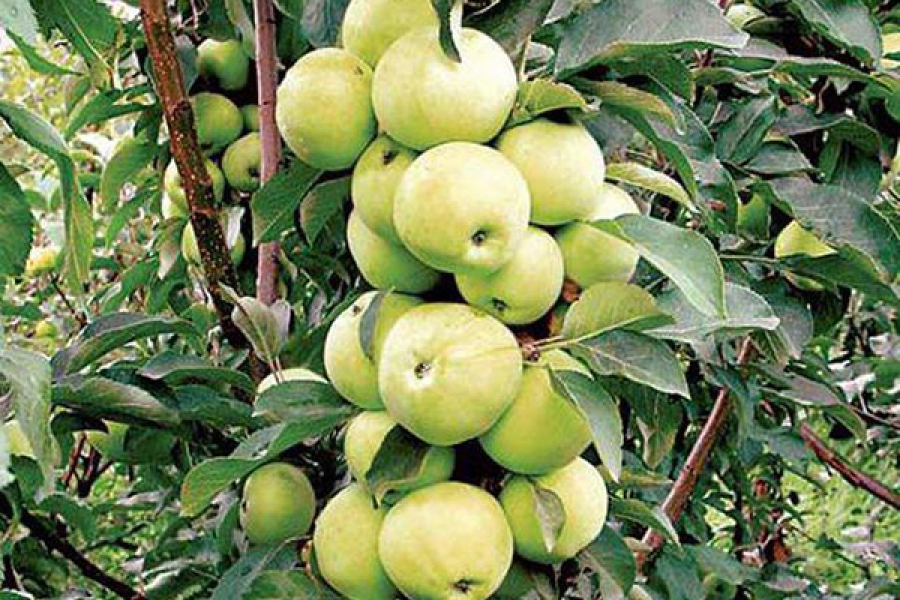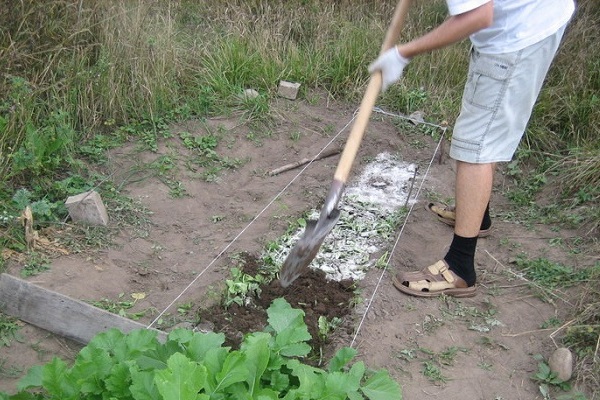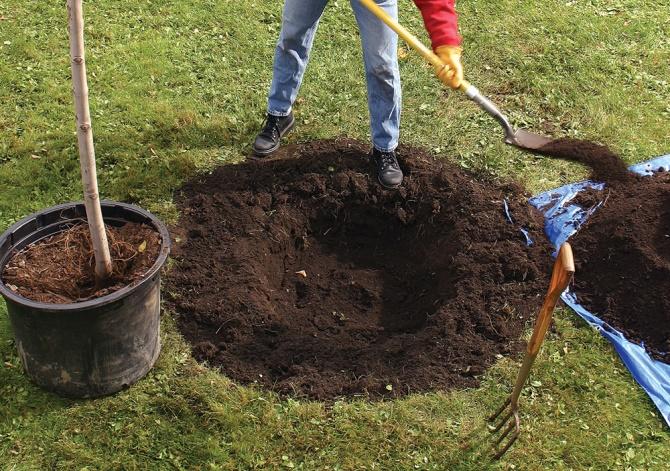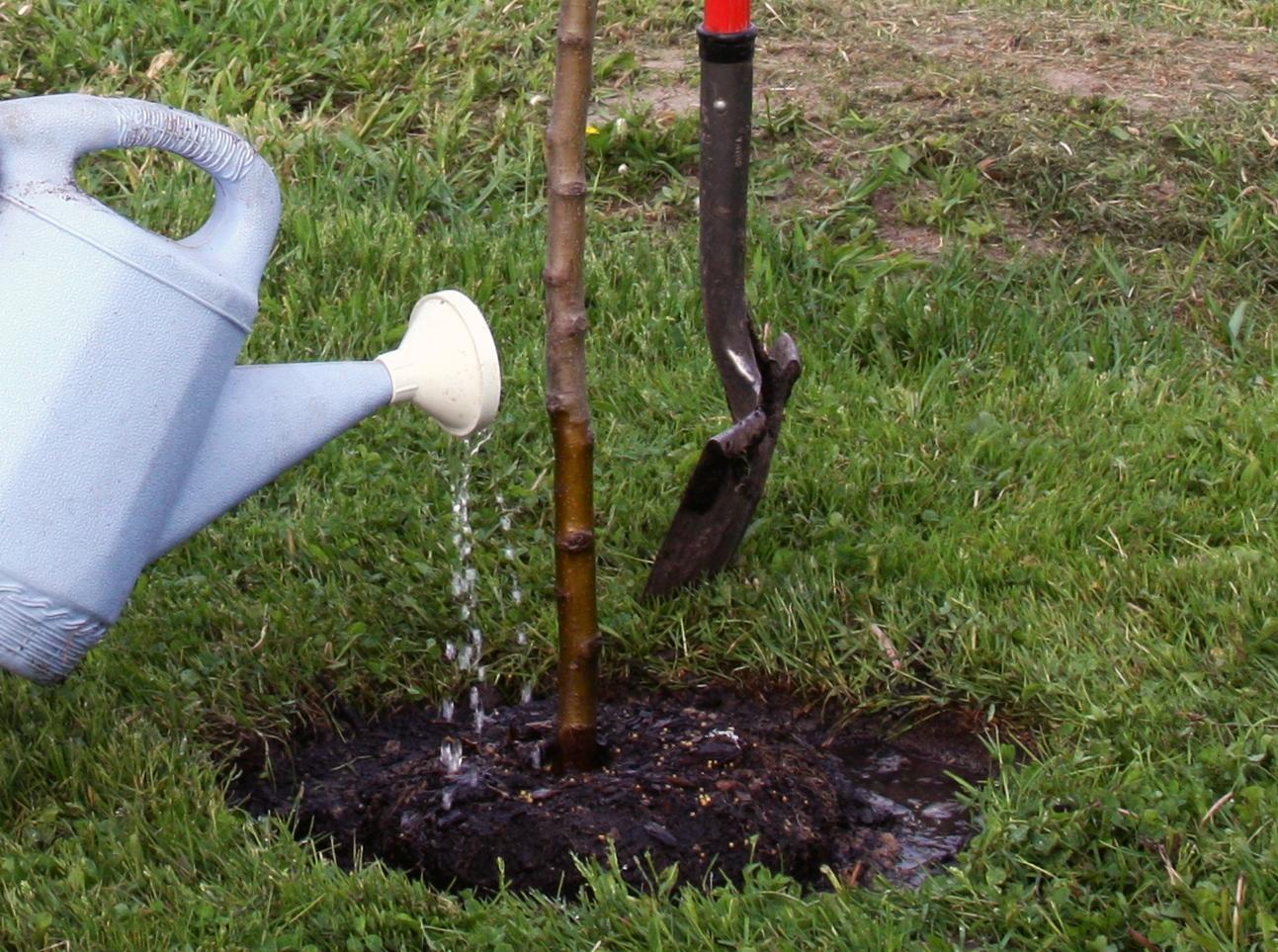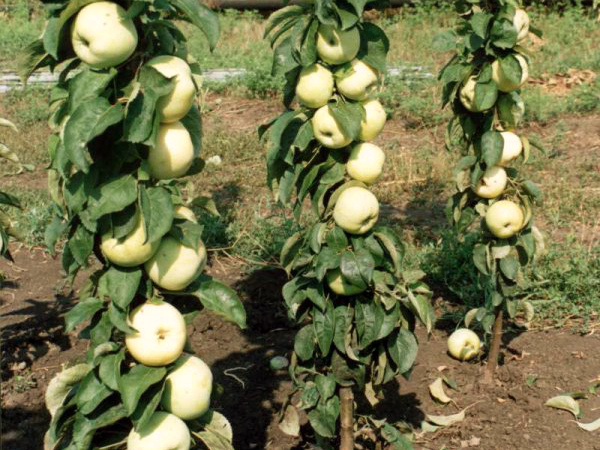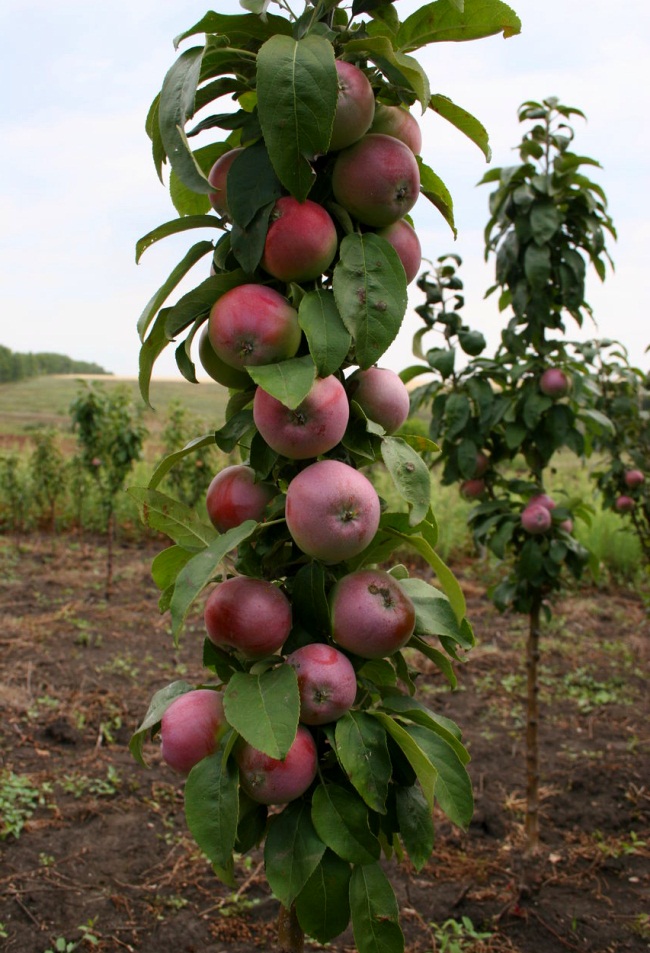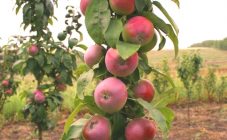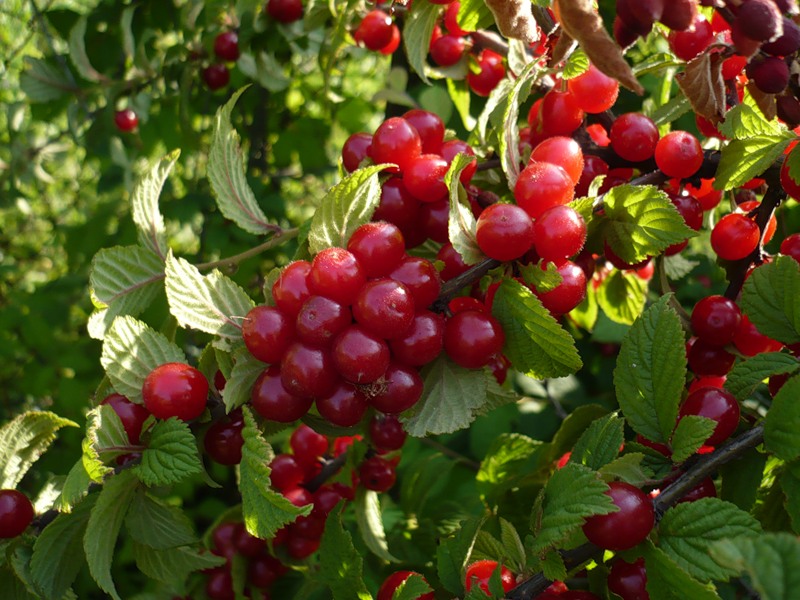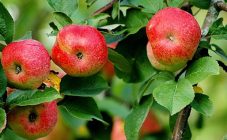Content:
In 1964, an unusual branch was formed on one of the apple trees in Canada - it did not have side shoots, was strongly leafy and had a lot of fruits adhered to it, like sea buckthorn berries. Breeders could not "pass" this mutation and immediately multiplied this miracle. The first columnar apple trees were developed in 1976.
Columnar trees are those trees, from the trunk of which small shoots extend at an acute angle (ringlets). They form the crown of a tree, which can be about forty centimeters wide and up to three and a half meters high. To form such a crown, you need to apply very little effort. This is the type of apple tree Dialog columnar.
Apple tree columnar Dialogue: description and characteristics of the variety
In Russia, a variety of apple trees with this type of crown was bred by the breeder Professor Viktor Valerianovich Kichina in 1972.
These apple trees are unusually decorative. They look amazing both when they bloom in white-pink color and during fruiting, and their amber apples surround the entire trunk.
Self-infertile - a pollinator is required. It is necessary that other apple trees grow nearby. It doesn't matter if they are ordinary apple trees or columns, the main thing is that there are two or more of them.
The fruits of this apple tree are unusually tasty, sour-sweet and juicy. The size of apples is not large (only 70-100 g), the color is bright yellow, the shape is round-flat. The peel on the apples of this variety, although thin, is strong enough to protect the juicy white pulp of the fruit. The storage time for apples is not long. They will lie only about a month, and even then, if the temperature is about zero degrees, with a humidity of 90%.
Apple-tree Dialog belongs to dwarf early summer varieties. The size of the trees is medium-sized (up to 2.5 m), small-sized, compact. Branches do not go to the sides, grow vertically.
The roots of this variety of apple trees are located in the upper layers of the soil, therefore it is not recommended to loosen and compact the soil under it. You shouldn't even plant anything under it; it is best to mulch the soil with straw or rotted sawdust.
Planting and leaving
Soil selection
Dialog prefers soil that is not heavy, loose, not acidic. With increased acidity of the soil, it must be limy.
Location
It is more advisable to plant apple trees of this variety on the sunny side of the garden, but in a place protected from strong gusts of wind. They need to be planted at some distance from other shrubs in order to avoid infection with diseases and to prevent the attack of pests. Also, another feature of planting such apple trees is that they should be planted of the same age. Moreover, try to plant summer apples with summer varieties, and winter apples with winter varieties.
Planting seedlings
The best time to plant Dialog apple trees is early spring, when the buds of the trees have just swollen. But it is quite possible to plant them in autumn - in September-October, be sure to pay attention to the weather conditions. It is best to take seedlings one year old - they take root better than two years old.
For planting in spring, the place must be prepared in the fall. It is necessary to dig a hole about half a meter deep and wide, mix the removed earth with humus in a 1 to 1 ratio, add lime (fluff or dolomite flour) to the acidic soil. Fill the well with the prepared mixture and leave until spring.
The parameters of the hole for planting a tree should be such that the roots can easily enter it and not be damaged. The prepared pit should be watered abundantly with warm water with the addition of 100 g of superphosphate and 50 g of potassium. Carefully place the roots so that the neck is at ground level, and the graft site is ten centimeters higher and cover with removed soil. Water and mulch the soil again.
Care rules
The apple tree can bear fruit in the first year after planting, but the tree must be protected from the load of the fruit. To do this, in the first year, you must remove all the ovaries. It is allowed to leave a couple of apples to see what color, taste and shape they will have.
In the second year of life, you can leave ten to fifteen apples, and the rest evenly removed. In the third year of life, half of the flowers are removed. From the fourth year, the apple tree for the first time begins to bear fruit in full force and from one tree you can collect up to fifteen kilograms of fruit.
By caring for the tree in this way, the gardener regulates the load, and the apples grow healthy and strong. The tree is also gaining strength and forms many rings on which fruits will grow.
If you plant a garden with columnar apple trees, then the harvest is ensured every year. You can pick apples from the Dialogue in the second decade of August.
The wood of this variety is quite hard and, if properly maintained in the first years, it will not allow the apple tree to bend, let alone break under the weight of a ripe crop. But the roots "pumped up" it, so it needs to be grown on a rootstock, which is used as dwarf apple varieties. To do this, a varietal Dialog should be grafted onto a previously prepared stock (the Paradizka apple tree has proven itself well).
Top dressing and watering
Dialogue prefers organic matter as fertilizer:
- urea;
- humus;
- diluted chicken droppings.
The peculiarity of this apple tree is that it cannot be watered at the root, as it has very delicate roots. It is useful for her to use a drip shower. Such watering protects the tree from pests, and fills the soil with moisture and oxygen.
Fertilizers
Fertilizers for columnar apple trees are the same as for ordinary fruit trees:
- in the spring you need to add ammonium nitrate and urea;
- how it blooms - potassium sulfate and superphosphate;
- at the first appearance of fruits, it needs sodium humate and nitrophoska;
- also do not forget about organic fertilizers;
- in the fall it is necessary to apply potash-phosphorus fertilizers.
Wintering
The mulch that was used in the summer (straw, hay) must be removed, otherwise rodents will settle in it and can harm the tree. Instead of it, now you need to lay the spruce branches, they also cover the trunk, placing the needles down. On top of the spruce branches, the apple tree can be covered with burlap. These miniature trees can also be a decoration of the garden in winter. In winter, you also need to provide a snow shelter. In this form, apple trees overwinter comfortably.
With the onset of the first warm days in spring, the entire shelter is removed. After the soil has completely melted and warmed up, it is mulched again with straw and hay.
Advantages and disadvantages of the variety
Summing up this article, the following characteristics can be distinguished.
Advantages:
- compactness;
- winter hardiness;
- ease of care;
- disease resistance (scab and powdery mildew);
- decorativeness;
- easy harvesting.
Disadvantages:
- high price;
- short shelf life of fruits.
In order for the Dialog columnar apple tree to enjoy the harvest every year, it is necessary to take care of it from the first day of life. After all, how nice it is on a winter evening, when a blizzard is singing outside the window, to enjoy fragrant apple jam, from a jar of which it smells like summer.
